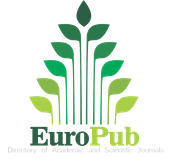Media Literacy for Dissemination Anticipated Fake News on Social Media
Abstract
Keywords
Full Text:
PDFReferences
Baran, S. J., & Davis, D. K. (2010). Mass Communication Theory: Foundations, Ferment and Future. Belmot: CA, Wadswoth.
Efendi, A., Astuti, P. I., & Rahayu, N. T. (2017). ANALISIS PENGARUH PENGGUNAAN MEDIA BARU TERHADAP POLA INTERAKSI SOSIAL ANAK DI KABUPATEN SUKOHARJO. Jurnal Penelitian Humaniora. https://doi.org/10.23917/humaniora.v18i2.5188
Effiong, C. (2018). Globalization, Social Media and Imperatives in the Promotion of Nigerian Cultural Values. Journal of New Media and Mass Communication, 5(1), 14–22. https://doi.org/10.18488/journal.91.2018.51.14.22
Febrianti, L. Y. P., & Irianto, O. (2017). Pentingnya Penguasaan Literasi bagi Generasi Muda dalam Menghadapi Mea, 640–647. Retrieved from http://jurnal.unissula.ac.id/index.php/ELIC/article/view/1282
Gumgum, G., Justito, A., & Nunik, M. (2017). Literasi Media: Cerdas Menggunakan Media Sosial Dalam Menanggulangi Berita Palsu (Hoaxes) Oleh Siswa Sma. Pengabdian Kepada Masyarakat, 1(1), 35–40. https://doi.org/1410 - 5675
Hesthi Rahayu, W., & Utari, P. (2018). Elaborasi Pesan Hoaxes Di Grup Facebook Info Wong Solo. Komunikator, 10(1), 24–33. https://doi.org/10.18196/jkm.101003
M. Ismail Alif, A.Yudo Triartanto, Arvin Hardian, Fajar Kurniawan, A. D. S. (2018). Literasi Media Dalam Menanggulangi Berita Hoax (Studi Pada Pelajar SMKN 4 Bekasi dan Mahasiswa AKOM BSI, Jakarta). Jurnal Abdimas BSI: Jurnal Pengabdian Kepada Masyarakat, 1(3), 416–423. Retrieved from http://ejournal.bsi.ac.id/ejurnal/index.php/abdimas/article/view/4052/2515
Juditha, C. (2018). Hoaxes Communication Interactivity in Social Media and Anticipation (Interaksi Komunikasi Hoaxes di Media Sosial serta Antisipasinya). Journal Pekommas. https://doi.org/10.30818/jpkm.2018.2030104
Kurnia, N. (2005). Perkembangan Teknologi Komunikasi dan Media Baru: Implikasi terhadap Teori Komunikasi. Mediator: Jurnal Komunikasi, 6(2), 291–296. https://doi.org/10.29313/mediator.v6i2.1197
McQuail, D. (2011). Teori Komunikasi Massa McQuail, Edisi 6, Buku 1. Jakarta: Salemba Humanika.
Prayitno, B. (2018). Langkah Pemerintah Menangkal Diseminasi Berita Palsu. Jurnal Wacana Kinerja: Kajian Praktis-Akademis Kinerja Dan Administrasi Pelayanan Publik, 20(2), 17. https://doi.org/10.31845/jwk.v20i2.19
Marwan, M. R., & Ahyad. (2016). Anlisis penyebaran berita hoax di Indonesia.
Nasution. (2003). Metode research _ metode penelitian _ S. Jakarta: Bumi Aksaea.
Sabrina, A. R. (2019). Literasi Digital Sebagai Upaya Preventif Menanggulangi Hoaxes. Communicare, 5(2), 31–46. Retrieved from http://journal.lspr.edu/index.php/communicare/article/view/36
Silverblatt, A. (1995). Media Literacy. Westport CT: Praeger.
Tamburaka, A. (2013). Literasi Media: Cerdas Bermedia Khalayak Media Massa. Bandung: Rajawali Pers.
Tsaniyah, N., & Juliana, K. A. (2019). Literasi Digital Sebagai Upaya Menangkal Hoaxes Di Era Disrupsi. Jurnal Dakwah Dan Komunikasi, 4(9), 1689–1699. https://doi.org/10.22515/balagh.v4i1.1555
Yodiansyah, H. (2018). Akses Literasi Media Dalam Perencanaan Komunikasi. Jurnal Ipteks Terapan. https://doi.org/10.22216/jit.2017.v11i2.966
Zellatifanny, C. M., & Mudjiyanto, B. (2018). Tipe Penelitian Deskripsi Dalam Ilmu Komunikasi. Diakom : Jurnal Media Dan Komunikasi, 1(2), 83–90. https://doi.org/10.17933/diakom.v1i2.20
https://mastel.id/hasil-survey-wabah-hoax-nasional-2019/
DOI: https://doi.org/10.29313/mediator.v13i2.6624
Refbacks
- There are currently no refbacks.

This work is licensed under a Creative Commons Attribution 4.0 International License
























